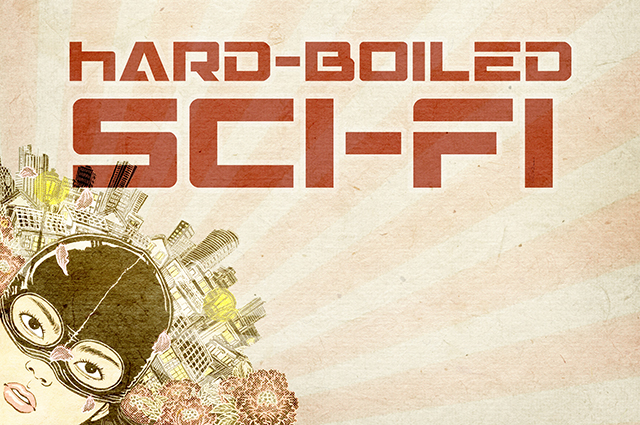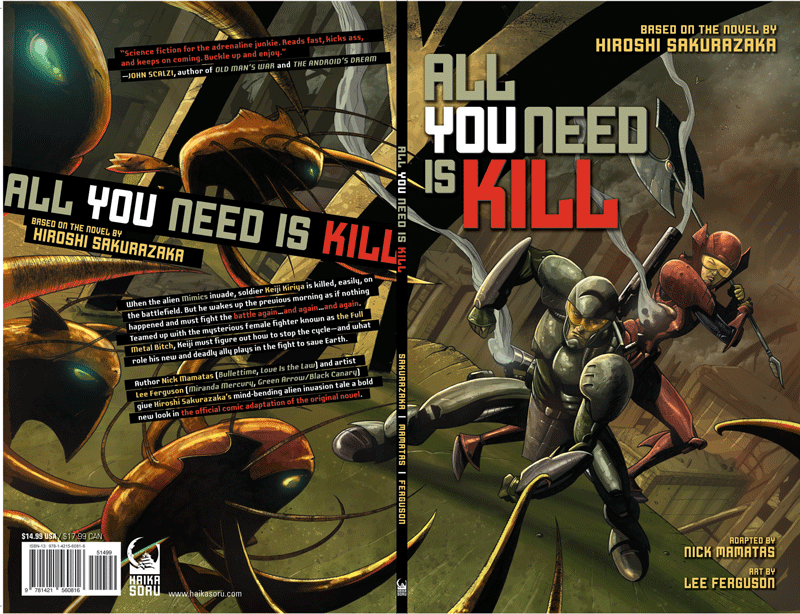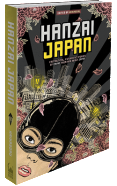Japan’s “possible” futures seen through the speculative lens of fantasy and science fiction.
By Leslie Lee III
If you know anything about manga, you probably know a lot about VIZ Media. The company is one of the longest-running and most notable international distributors of anime and manga. Some of their properties include huge series like “Naruto,” “Dragon Ball,” and “Bleach.” Last year VIZ Media expanded into film production with the Tom Cruise sci-fi action thriller “Edge of Tomorrow/All You Need Is Kill.”
VIZ Media’s venture into Hollywood was enabled by its decision to get into the Western dominated science business. Since 2009, VIZ Media’s Haikasoru line has brought translations of popular Japanese science fiction, fantasy, and horror to the English-speaking world.
Award-winning author Nick Mamatas—known for brewing a unique mix of science fiction, fantasy, and Lovecraftian horror in works like “Love Is The Law” and “The Nickronomicon”—is one of the is one of the masterminds behind Haikasoru.
Their latest release on the Haikasoru line is “Hanzai Japan,” a collection of weird crime stories from Japan and abroad. It’s the third in a series of anthologies that began with the sci-fi focused “Future Japan” and the fantasy-leaning “Phantasm Japan.”
Nick and co-editor Masumi Washington have put together an entertaining and thought-provoking collection of tales from both Japanese and Western authors. One sees yakuza use a monster attack as cover for a bank robbery; another has a sentient atlas that helps its owner get away with heinous crimes.
Nick talked to Weekender about “Hanzai Japan,” what he looks for when publishing and a story, and what he thinks the future of Japan looks like.
VIZ Media is known for manga and anime, but the Haikasoru line has become a reliable source of Japan related spec fiction, from original works to translations. What’s the goal of the Haikasoru line?
The goal of Haikasoru was to bring Japanese science fiction, fantasy, horror and even a teensy bit of mystery and magical realism to the English-speaking world. It was just a matter of exploring what audiences outside the manga field might like.
What do you think makes Japan so fascinating to Western SF/F readers and writers? Why do you personally find it interesting?
I suspect fundamentally that it’s a false Japan – a Japan of the spectacle comprised of ninja and glowing neon and tittering geisha – that initially attracts SF/F readers and writers to the country. Only when they dig a little deeper do they learn about the society, which does contain those bits of spectacle, but which is far more interesting than all of that. I suppose what I find interesting about Japan is its ability to navigate the decades since the end of the Second World War to become not just an economic power on the world stage, but a major exporter of popular culture.
Why was crime chosen as a subject of this collection?
HANZAI JAPAN is the third in a series of anthologies that began with science fiction anthology THE FUTURE IS JAPANESE in 2012. After “Mono No Aware” by Ken Liu won the Hugo Award, we decided to continue – PHANTASM JAPAN, covering fantasy, was published in 2014, and so the next genre up was crime. Who knows, if HANZAI JAPAN does well, we may have a horror anthology next…or a romance anthology!
What’s your favorite story in “Hanzai Japan”?
That’s sort of like asking a parent who his or her favorite child is. But I do think there is something special about “Monologue of a Universal Transverse Mercator Projection” by Yumeaki Hirayama. I would be amazed if it doesn’t get nominated for some sort of award next year.
Are there any manga or anime series you are currently following?
I actually come to my work for VIZ Media via science fiction rather than manga fandom, but I did recently edit my first manga translation: “Fragments of Horror” by Junji Ito. I love anything he does!
As an editor, what are you looking from stories or writers when you publish them on Haikasoru?
What I look for is something roughly analogous to the sort of SF Western readers already know, but that doesn’t slavishly emulate it. Sometimes we throw caution to the wind and publish something entirely off the wall, like “Self-Reference ENGINE” by Toh EnJoe—a risk that led to a reward in the form of a Philip K. Dick Award Special Citation.
The book presents visions for an alternative or future Japan; what do you imagine is the future for the country and culture?
I think that in the same way science fiction and the pressures of the Cold War influenced the United States to become a contradiction – a giant military tied to an individualistic ethos – we’ll see a similar thing in Japan: science fiction and population pressures will lead to massive innovations in robotics and portable AI, and increased collectivist attitudes among the non-robot population, even as AI serve to make people more self-sufficient and isolated from their fellows.
What crime would you commit in future, or present day, Japan?
Present-day: eating a food other than ice cream, while walking down the street, with my bare hands, though that’s more of a social violation than a crime.
Future: Kaiju rustlin’.
“Hanzai Japan: Fantastical, Futuristic Stories of Crime From and About Japan” is available on Amazon in paperback or Kindle format. For more information about Haikasoru, visit www.haikasoru.com.












